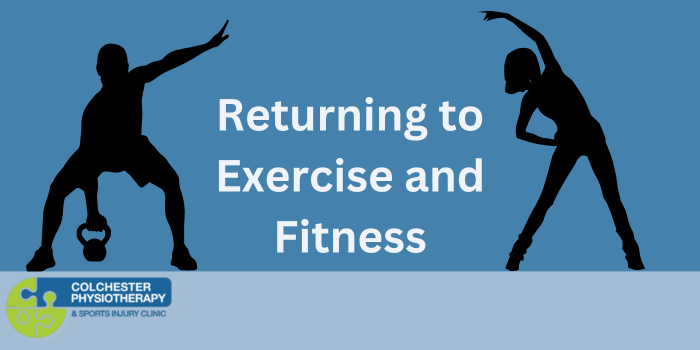Returning to Exercise and Fitness
Posted on 31st December 2019 at 18:41
By Craig Fowlie
When the festive season comes to a close, many of us think about getting back into our exercise regime. Or you may wish to start a new one.
Our team has encountered many clients with issues caused when returning to exercise. In this article we will walk you through any problems that may arise and provide our advice. If you do need further help, please get in touch with our experienced physiotherapists.
Increases in physical activity can create muscular and tendon discomfort. This is due to soft tissue overload or delayed onset muscle soreness (DOMs). These problems are associated with pain yet they are not linked to significant soft tissue damage. The good news is long periods of rest post exercise are not usually required.
Dealing with DOMs
Increased resistance (weight training) or intense activity your body tissue is not used to can cause delayed onset muscle soreness (DOMs). It is often evident within 24 hours. Discomfort levels will usually increase over the next 24-48hrs. Rest assured, 2-3 days post exercise the discomfort settles and you can return to exercise.
Dealing with Soft Tissue Overload of Tendons
Tendon pain from overload of soft tissue can occur immediately after exercise or as we cool down. It can be caused by a build-up of load over a single exercise session or several exercise sessions. Unlike DOMs it can prevail and be a nuisance during future exercise sessions. It is best avoided by graduating exercise or tissue load by no more than 10% per week (10% rule). In endurance exercise, like running or cycling, calculate this by recording weekly distance travelled or time spent exercising.
With many exercise methods undertaken at the gym, calculating load becomes more tricky. Especially in resistance exercise where certain thresholds may need to be met to improve strength.
To find a weekly point total to apply the 10% rule to, complete the following:
Rate the intensity of your gym session from 1-10 (1 is easy and 10 is very hard)
Then multiply it by the amount of time you exercised for
Add the calculated scores to get a weekly total and apply the 10% rule
Provided it settles within 24 hours post exercise, discomfort that is less than 4/10 (where 10 is extreme pain) is usually nothing to worry about. If you are experiencing higher levels of discomfort for a long period we recommend you take time to recover and let the discomfort settle.
If you have persistent problems preventing you from exercising at the level that you would like, please contact our team for expert help.
Author
Craig Fowlie

Craig is a highly specialized physiotherapist with post graduate qualifications in Acupuncture and Sports and Exercise Medicine.
He has worked with Professional Rugby sides in New Zealand and has assisted Great Britain Table Tennis at the World Team Championships and Olympic Qualifiers in Qatar and Germany. He is a consultant for the Governments Talented Athlete Scholarship Scheme and has published and presented research in the Journal of Physiotherapy and the Chartered Society of Physiotherapy Annual Conference.
Outside of work he enjoys participating socially in triathlon and running.
Tagged as: Delayed onset muscle soreness, load tolerance, physio really helps, physiotherapist, quality assured clinic, Return to exercise, tendon overload
Share this post:







